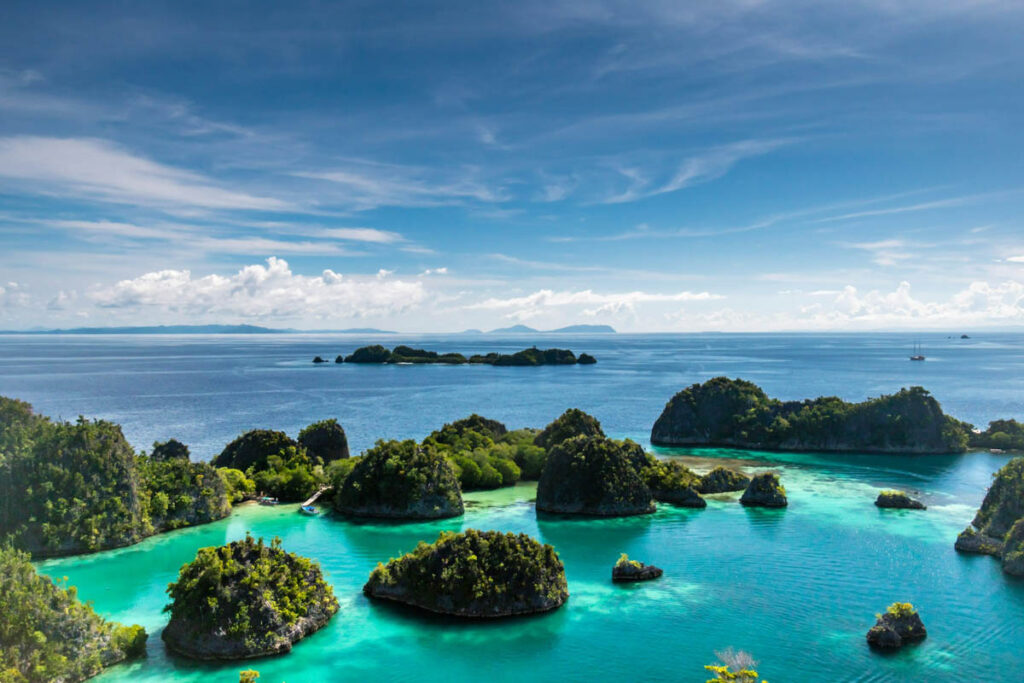For experienced scuba divers, few places on Earth rival Raja Ampat. Located in Indonesia’s West Papua province, Raja Ampat is at the heart of the Coral Triangle, boasting the world’s highest marine biodiversity. Its crystal-clear waters, vibrant coral gardens, and thriving marine life make it one of the most sought-after dive destinations in the world. This guide will take you through everything you need to know about diving in Raja Ampat, from top dive sites and the best time to visit, to where to base yourself and how to get the most out of your trip.
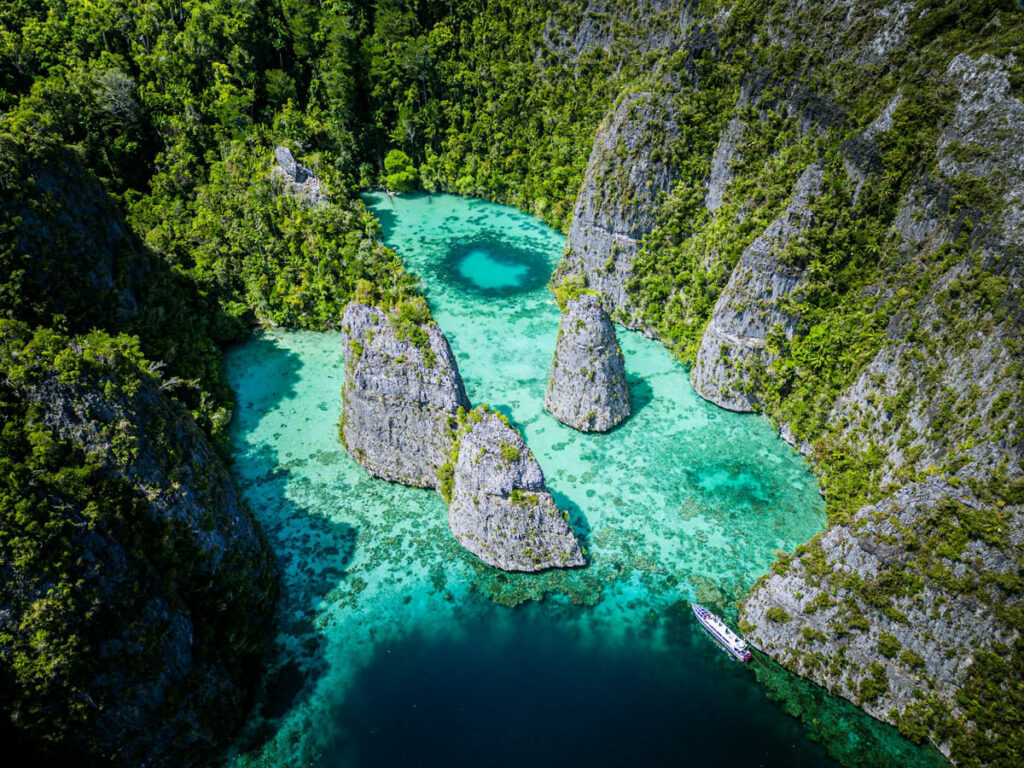
Photo by Simon Spring on Unsplash
Diving in Raja Ampat
When it comes to diving in Indonesia, it’s hard to beat Raja Ampat. This iconic dive destination is made up of four main islands (Waigeo, Misool, Salawati, and Batanta) and is home to more than 1,500 smaller islands, islets, and cays. All of which creates a vast archipelago filled with dive opportunities. The diversity of marine life here is unparalleled — over 1,300 species of fish, 550 species of coral, and countless macro critters can be found in these waters.
What Makes Raja Ampat Special?
- Unparalleled Marine Biodiversity: Raja Ampat is the epicenter of marine biodiversity, and scientists say that it contains 75% of the world’s coral species. Divers here will encounter an incredible variety of fish, corals, and other marine life, from tiny pygmy seahorses to manta rays.
- Untouched Reefs: The remoteness of the region means that many of the reefs are pristine, with minimal human impact. Raja Ampat’s reefs are known for their vibrant health and vast coral gardens.
- Exciting Currents: Many dive sites in Raja Ampat feature strong currents, bringing in large pelagic species like sharks and barracudas. It is a fantastic place for experienced divers to go drift diving.
- Remote Location: Because of its location, Raja Ampat also remains less crowded than other top dive spots. It’s the perfect destination for those looking to escape and experience unspoiled beauty.
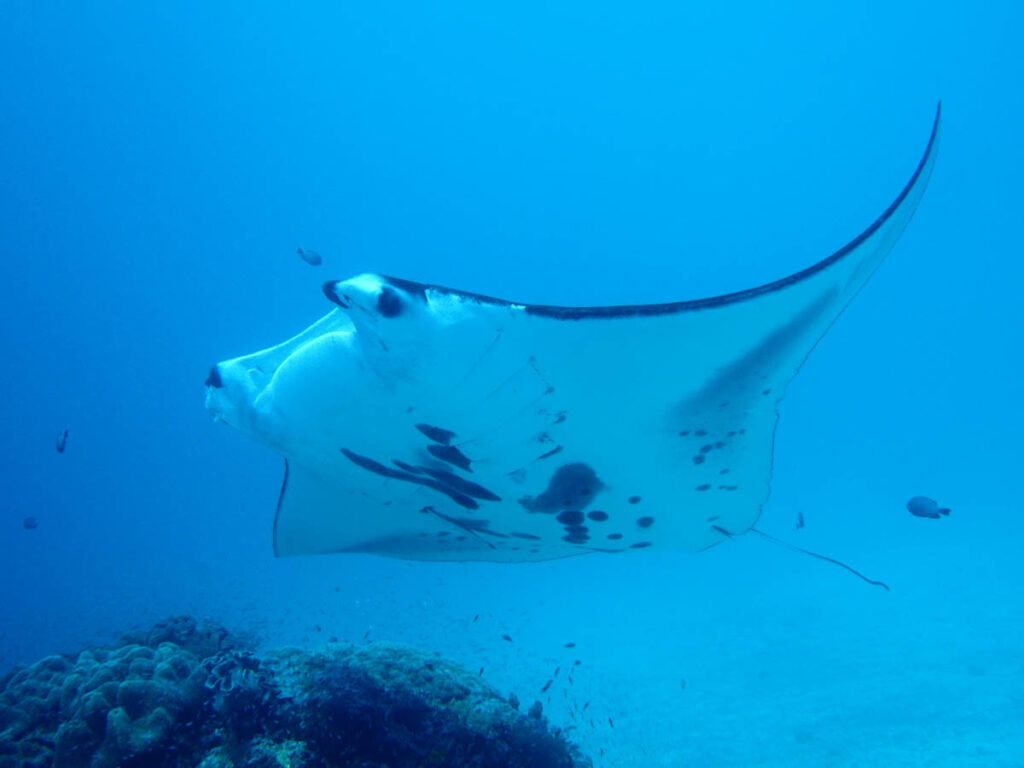
Photo by Swanson Chan on Unsplash
Top Places to Go Diving in Raja Ampat
Raja Ampat has a wealth of dive sites to explore. Here are some of the top locations to explore:
Cape Kri
Known for setting a world record for the most fish species spotted on a single dive (over 370!), Cape Kri is a must-visit. Expect large schools of fish, sharks, and barracudas in the mix.
Blue Magic
A famous cleaning station for mantas, Blue Magic is a hotspot for large pelagics. There you can encounter giant trevallies, tuna, and a range of reef sharks. Keep an eye out for mantas as well.
Manta Ridge
As the name suggests, this site is renowned for its manta rays. Mantas come here to feed and get cleaned by smaller fish. It’s an awe-inspiring experience to dive alongside these ocean giants.
Melissa’s Garden
This dive site is known for its stunning coral gardens, with a wide array of hard and soft corals. It’s a great site for macro enthusiasts, with a chance to spot pygmy seahorses, nudibranchs, and other critters.
The Passage
This unique site is a narrow channel between Waigeo and Gam islands, offering a thrilling drift dive through jungle-covered cliffs. The nutrient-rich waters attract a mix of macro life and larger species.
Batu Lima
Meaning “Five Rocks,” Batu Lima is known for its dramatic underwater topography, featuring walls and swim-throughs covered in soft corals. It’s an excellent site for spotting reef sharks and Napoleon wrasse.
Misool Island
Located in the southern part of Raja Ampat, Misool is famous for its marine biodiversity and dramatic landscapes. The reefs here are filled with healthy corals, colorful fish, and frequent shark sightings.
Cross Wreck
A WWII Japanese patrol boat that lies in shallow waters, the Cross Wreck is ideal for wreck divers. It’s also a hotspot for macro photographers, as the wreck hosts a wide variety of critters.
Sardine Reef
Contrary to its name, Sardine Reef isn’t filled with sardines but rather large schools of fish, including fusiliers, trevallies, and barracudas. It’s a fantastic site for witnessing bustling fish action.
Arborek Jetty
One of the best spots for macro lovers, Arborek Jetty is a magnificent dive site known for its diverse critters, including mantis shrimp, blue-ringed octopus, and pipefish. The site also features a stunning coral garden beneath the jetty.
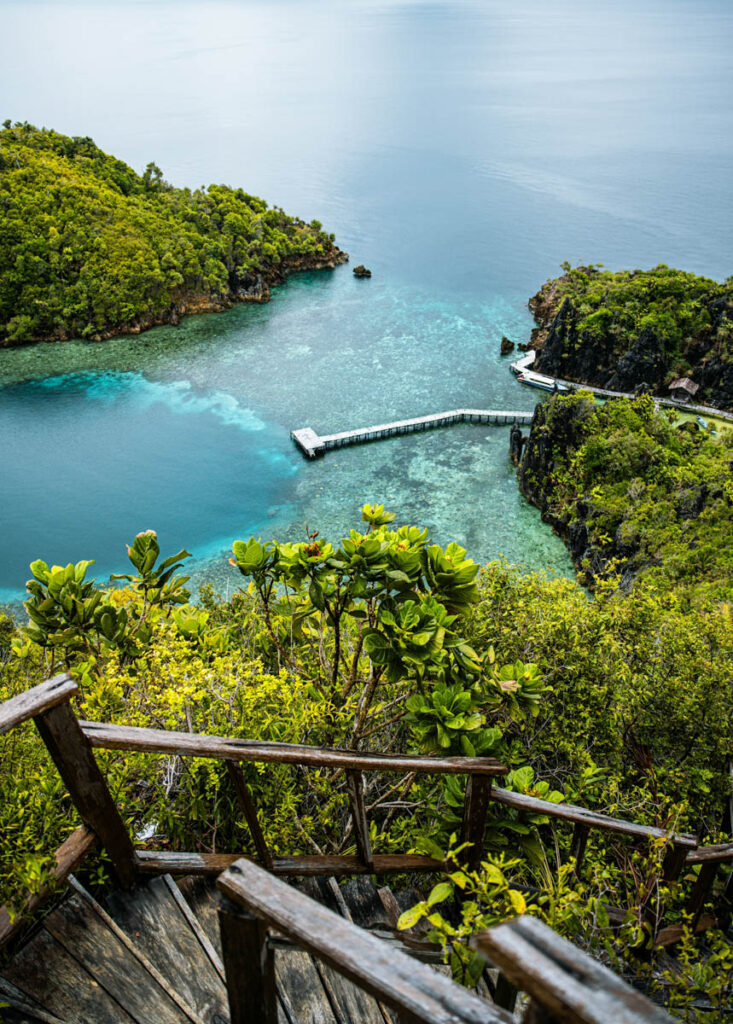
Photo by Simon Spring on Unsplash
When to Go Diving in Raja Ampat
Diving in Raja Ampat is possible all year, but conditions vary depending on the season. The water temperature ranges from 27°C to 30°C (80°F to 86°F) year-round. During the wet season (June to September), temperatures may dip slightly, but conditions are still comfortable for most divers.
Water visibility generally ranges from 15 to 30 meters (50 to 100 feet), with the best visibility occurring from October to April. The dry season (October to April) is considered the best time to dive in Raja Ampat. During this period, the seas are calmer, visibility is higher, and marine life is more active. The wet season can bring rougher seas and reduced visibility, but diving is still possible.
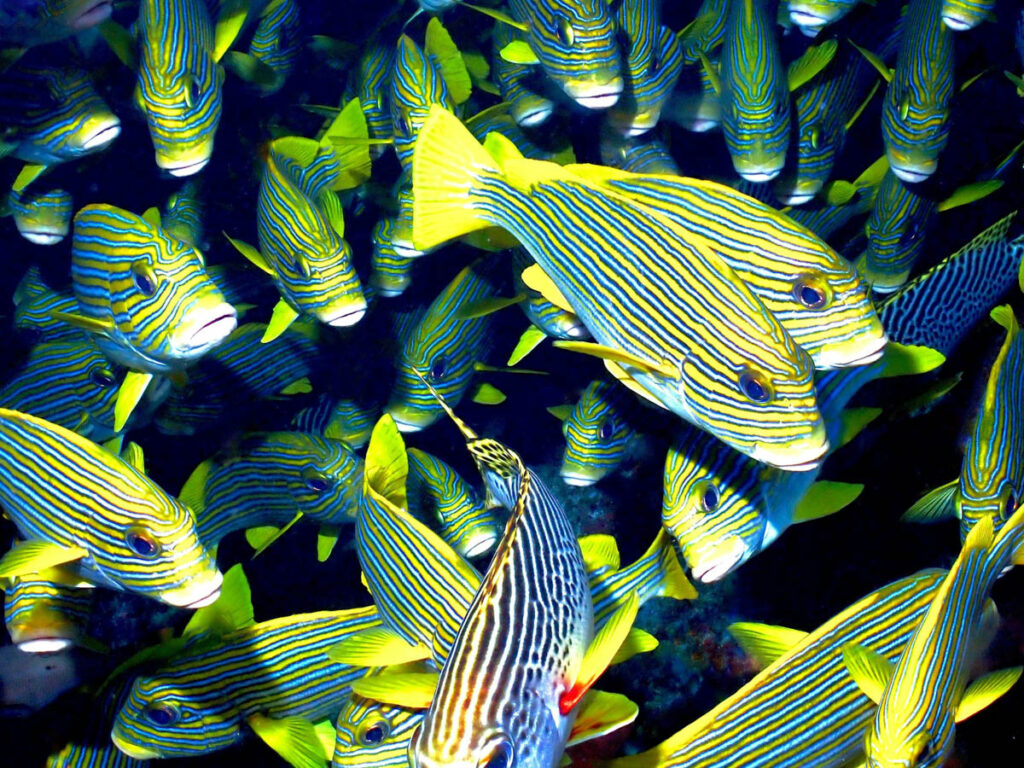
Photo by Claus Giering on Unsplash
Seasonal Marine Highlights
There are some great seasonal marine life highlights to be aware of when planning a dive trip to Raja Ampat.
- Manta Ray Season: October to April. Sites like Manta Ridge and Blue Magic are prime spots for manta ray encounters during this period.
- Coral Spawning: Coral spawning typically occurs around October and November.
- Shark Sightings: Sharks can be seen year-round, but they are easier to spot during the dry season when dive conditions are at their best.
Dive Experience Needed
Raja Ampat caters to a wide range of divers, but due to the strong currents in many dive sites, it’s generally recommended for experienced divers. Some of the more challenging sites can have unpredictable currents that require good buoyancy control and confidence in drift diving.
It’s a good idea to complete a drift diving and a perfect buoyancy course before your trip so you can handle the conditions safely. Some dive sites in Raja Ampat also feature deeper sections, so you may wish to complete a deep diving certification as well.
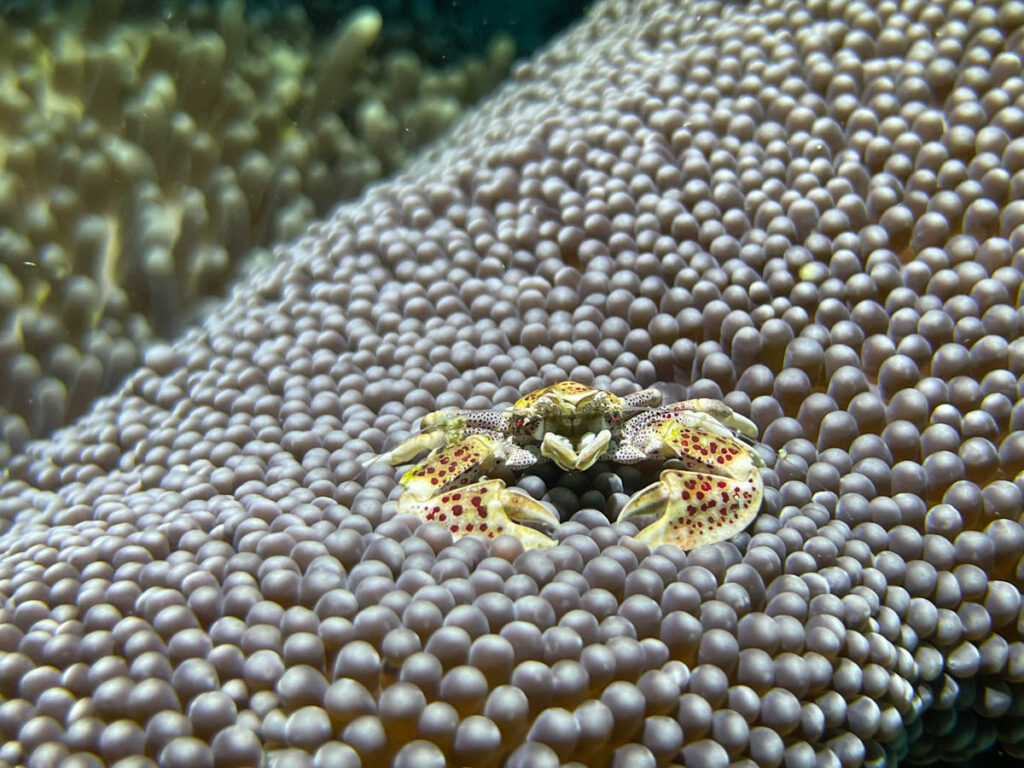
Photo by Farwiza Farhan on Unsplash
What is the Best Way to Dive Raja Ampat?
Given its remote location and the spread-out nature of the islands, the best way to dive Raja Ampat is via a liveaboard. Liveaboards offer the advantage of taking you to the best dive sites across the archipelago, including the more remote areas like Misool and Wayag.
Raja Ampat liveaboards range from budget to luxury options, with trips typically lasting from 7 to 14 days. These trips offer multiple dives per day, including night dives, allowing you to explore the full breadth of Raja Ampat’s dive sites.
That said, there are several eco-resorts in Raja Ampat that offer day trips to nearby dive sites. While this option provides more flexibility and comfort, you’ll be limited to dive sites within reach of the resort. Resorts are great for those who prefer a land-based experience but still want to enjoy world-class diving.
Where to Base Yourself
There are several areas where you can base your diving adventure:
- Sorong: The main entry point for Raja Ampat, Sorong is where most liveaboards depart from. It’s also home to a few dive operators offering day trips to nearby sites.
- Waigeo Island: The largest of the main islands, Waigeo is home to several dive resorts. It’s a good base for exploring the northern dive sites, including Cape Kri and The Passage.
- Misool Island: If you’re diving the southern region of Raja Ampat, Misool is a fantastic base. The island is surrounded by some of the best dive sites in the area and offers luxury eco-resorts for a truly immersive experience.
- Dampier Strait: Known for its nutrient-rich waters and strong currents, Dampier Strait is one of the most popular areas for divers. It offers excellent drift diving and a wide range of marine life.



